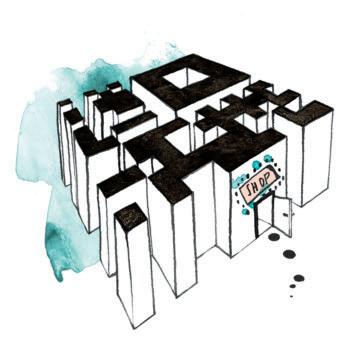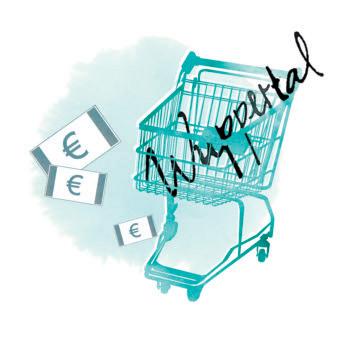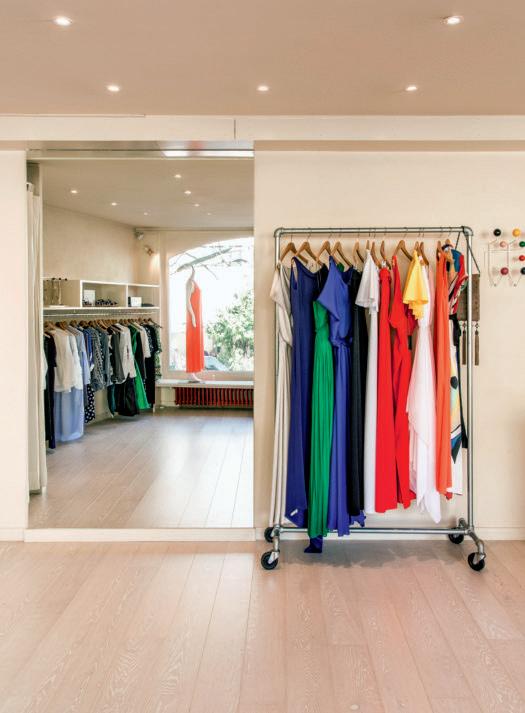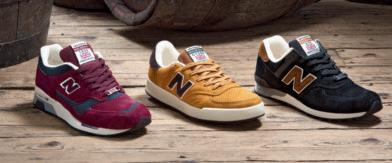
11 minute read
Fashion and Technology are Increasingly
Years as a buyer for fashion companies like Anne Taylor and Pea in the Pod made Mona Bijoor realise one thing: the process of ordering with catalogues, pens, reams of paper, Excel sheets, and fax machines would keep the wholesale business stuck in the 20th century. In order to make the process paperless, analytical, and efficient, she started Joor in 2010. Four years later, the online platform processed almost three billion fashion wholesale orders, serving customers such as Rag & Bone, Façonnable, Peter Pilotto, Jason Wu, Marni, Balmain, APC, Stella McCartney, Charlotte Olympia, and Loewe. Today, about 40 percent of the orders come from Europe, while European designers sold about 1.5 billion US Dollars worth of goods through US-based Joor. We were given the opportunity to pick Mona Bijoor’s brain about the digital future of fashion. Text: Petrina Engelke. Photo: Joor
Why is the concept of ordering in showrooms not suitable for today’s fashion business? Showrooms certainly have their place, in fact most of our clients use the Joor platform in the showroom to place their orders. However, there was also a demand for a way to find items for your store without having to leave it. That has been a game-changer for small businesses and e-commerce start-ups. Resort collection, high summer collection, pre-fall: There are more and more attempts to sell new collec tions. What direction do you think this is taking? I think newness is a trend that is not diminishing. Consumers want differentiation and it is important to inject that newness into collections throughout the year. However, we’ve seen very successful collections that show 2-4 times a year. There is no hard and fast rule. Successful brands will have their own philosophy and stick to their strategy and won’t conform to industry standard. When you look at the data pertaining to wholesale on your platform, what is hap pening in the fashion industry that you weren’t aware of before? The most interesting and surprising trend to keep an eye on has been the lingering effect of fast fashion, where brands move their products from runway to stores very quickly in an attempt to remain in trend. We’re starting to see that this is making fashion more “trendless”: It’s getting harder to isolate what the global community of designers has in common. Fashion will always to a certain extent be related to the season because people will never want to wear fur in August regardless of what the trends dictate. But the biggest innovators in fashion are not really as concerned with “what colour is in right now” as opposed to “how can I get the right product to the customer at the right value.” What is your personal take on the pace of fashion and its future? Fashion and technology are becoming increasingly interconnected. Clothing is becoming increasingly concerned with functionality, and functional items are increasingly becoming concerned with being stylish. Last year Apple decided to become a watch-company and Fitbit became a fashion and fitness accessory. We know that the line will continue to blur.
With Joor, Mona Bijoor digitalized wholesale for apparel and accessories – and made it easier. Ultimately, she wants to bring her service not only to the fashion industry, but also aims to help the furniture and toys sectors.
The One Hand – And The Other
While online shops are dipping their toes into “brick and mortar”, stationary retailers are realising that digitalisation is the future. The art is to cross borders and to transform divisive factors into unifying ones. style in progress tracked down individuals who have turned the buzzword “multi-channel” into profitable business models.
Stylealbum
Backyard Online Concept Store
Stylealbum’s balanced mix of luxurious and more inexpensive products appeals to both cool businesswomen and trendy students. Now the small online boutique has opened its own store in Düsseldorf.
Those with a sufficient online presence can rely on stationary locations that only well-informed customers can find. In late August, Stylealbum, the well-known online concept store, opened a 180 square metre store in a backyard of Bastionstrasse 9 in Düsseldorf’s Carlstadt district. The product range does not only include fashion by designers such as Achtland, Stine Goya, Kaviar Gauche, Baum und Pferdgarten, Just Female, and Malaika Raiss, but also accessories, jewellery, stationery, and electronic gadgets, as well as beauty and interior articles. The products are showcased in the ambience of an airy loft atmosphere. Last year, Sue M. Lee, the fashion designer and founder of Stylealbum, opened a three-month pop-up store in Bilker Allee, which was her first foray into the world of stationary retailing. She had launched her online shop eight years earlier. So why did she opt for a permanent stationary presence after all? “The product mix of Stylealbum is very particular. The environment is important for the presentation of products and the personal approach to customers. The photos on the Internet sometimes fail to do the elaborate processing of the designer items justice. The pop-up store has proved that the customers enjoy being advised. They like having the products explained and being shown combination possibilities. The main focus is not on shopping itself, but on creating an experience. Nevertheless, the combination of the offline and online worlds is vital to ensure that we can offer the best service possible.” She does not believe that the backyard location is a disadvantage: “We are convinced that this concept works. Concept stores such as Voo Store in Berlin or Merci in Paris prove that backyard locations can be quite successful. We plan regular events in the store, such as readings, movie nights, and product presentations. We strive to provide incentives to visit us on a regular basis. We

want the customers to feel comfortable and enjoy their stay with us - beyond mere shopping!” www.stylealbum.com
Sue M. Lee is a fashion designer in her own right; for Stylealbum, her online store, she often selects collections that need explaining. The timing for her new, stationary store is perfect.
Online City Wuppertal
Every City is a Mini-Amazon
The unique German funding project “Online City Wuppertal” is aimed at ending the impotence of stationary retailers in the face of supra-regional online competitors. It also strives to give Wuppertal’s customers the good feeling that they can shop online and still strengthen the local economy.
“We want to show Wuppertal’s customers that the product spectrum and diversity of the major online marketplaces is already available in their own town. We don’t have to bring it in from somewhere else”, explains Christiane ten Eicken, a project manager at Wirtschaftsförderung Wuppertal. Together with Andreas Haderlein, a business journalist and innovation consultant, she set out to introduce multi-channel retailing to the city. “Product diversity and availability are not unique features of Amazon & Co. Our city offers those aspects too”, Haderlein explains. 65 stationary retailers have joined the project and offer more than 8,000 products online. Many of the participating retailers are owner-managed stores from the fashion, jewellery, food, and furniture sectors. “The project funds alone would never have been sufficient to create an online shop for the whole town. Therefore, we are thrilled to have found a partner in atalanda, an Austrian company that offers the platform for the marketplace itself and handles the logistics for same-day delivery. That is an unbeatable competitive advantage over the other Internet giants”, ten Eicken argues. The delivery of ordered online products is organised by the delivery company MyCocktail Taxi, which utilises its fleet to capacity. If you order before 4.30pm, you receive the desired goods on the same day. The concept is clearly convincing. The participating retailers report an increased customer frequency, on their respective sales floors mind you! In some cases, retailers have experienced double-digit sales increases. The online presence specialist atalanda is currently in talks with no less than 130 cities. In autumn, the cities of Attendorn, Göppingen, and Wolfenbüttel are planning to launch their own online portals. Wuppertal is in the process of establishing the so-called “Retail Lab” in its town hall gallery, were supra-regional online retailers will be afforded the opportunity to showcase

their products in a shop-in-shop concept. “Within the framework of this pilot project, retailers can test innovative multi-channel concepts temporarily”, Haderlein explains. In addition, the city will soon open a drive-in counter where customers can comfortably pick up and return parcels from their car. www.onlinecity-wuppertal.de
65 stationary retailers offer 8,000 items - Wuppertal proves that product range and depth are not a monopoly of the larger e-commerce players. Christiane ten Eicken, the project manager, reports an increase of customer frequency and revenue.
Kresnik Woman Store
Curated Shopping, Hand-Made
“Out into the world” - or at least into Austria and Germany, for a start - is how one could summarise the main objective of Helga and Helmut Kresnik for 2015.
The name Kresnik is wellknown in the South Styrian village of Leibnitz, mainly because the Kresnik’s mother-in-law started to establish the family business with the first fashion stores 58 years ago. Today, the family runs three franchise stores on Leibnitz’s main square and, for the last 12 years, they also operate Kresnik Woman Store, a multi-brand boutique that stocks brands from the upscale price segment. Helga Kresnik, the managing director, is always accessible for her customers, either on-site, by telephone, and, since June 2015, also online via the personal shopping platform mywomanstore.at. It all began seven years ago, when the friend of a customer asked about the source of a particularly fetching outfit. Kresnik simply sent her an outfit per post and has successfully repeated this service ever since. Her website, which is basically a curated shopping platform, offers online what she already offers over-the-counter. “We don’t want to place a product range in the Internet store, but strengthen our services and, thus, strengthen our business as a whole”, Kresnik explains. Customers register on the website by supplying personal details and preferred tastes. They are then contacted by the styling team via telephone and e-mail to fine-tune the profile. In exchange for a guarantee, the customers are sent a personalised surprise package, as a rule with two combinable outfits worth 2,500 Euros. The package consists of items by brands such as Burberry, Max Mara, Marc Cain, Michael Kors, Moncler, Più & Più, Schumacher, or Strenesse. The customers can return the elements of the outfits they don’t want to keep. How does Kresnik differ from other curated shopping platforms? “I believe that we can do it better. We still have much to learn about the Internet, but we have a lot of experience in terms of advice and are much closer to the customer.” mywomanstore.at is definitely attracting a lot of attention. Besides Facebook likes and a steady flow of new registrations, the platform sent out no less than 10 surprise packages in its first month in operation. www.mywomanstore.at

A classic online store would probably not have operated profitably for long - Helga Kresnik believed it would be smarter to transfer her store’s product knowledge into the online world. Ten packages in the first month are certainly an excellent start.
Amsterdenim
The Win-Win Situation
The Dutch label Amsterdenim does not want to create competition for its retailers with its own web shop. This is why the brand has decided to pass on the proceeds from online sales to its stationary retailers.
Amsterdam is perceived as the unofficial denim capital of the world. Therefore it comes as no surprise that Ben Fokkema decided to proudly name his label Amsterdenim. The logo reflects what makes Amsterdam so special: the historic old town with its many bridges, picturesque canals, and intricate gables. In the best tradition of Dutch merchants, Fokkema has also developed a truly likeable business model. Retailers that decide to list Amsterdenim items are afforded the opportunity to sign up for the Online Community Programme. All online sales - minus shipping costs and a handling fee - are passed on to the participating stores. Ben Fokkema explains the concept as follows: “When a customer visits the online store and finds a suitable product, we highlight the store closest to the customer’s location. When the product in question has been purchased, the customer can choose between picking it up from the store and having it mailed. If the customer decides to pick up the product from the store, we send it to the closest shop immediately. This affords every retailer the chance to access the entire collection. The customer can handle the goods, try them on, get professional advice, and - if necessary - pick a different size or model. We believe that this approach is the next big step for the retail industry and brand marketing in general.” To date, no less than 65 retailers have signed up for the programme. The declared aim is to persuade all Amsterdenim retailers to participate, thereby expanding the network of “pick up locations”. Amsterdenim is currently working on software that enables the label to monitor the inventories of retailers in real time, which, in turn, means it could communicate product availability to the consumers in real time. So far, the service is only available in the Netherlands. From February 2016 onwards, the win-win concept will be implemented in Germany and other countries.

The Online Community Programme launched by Ben Fokkema, the founder of Amsterdenim, is aimed at bringing more business to the brand’s retail partners. If you order online, you can pick up the items in the store itself.










